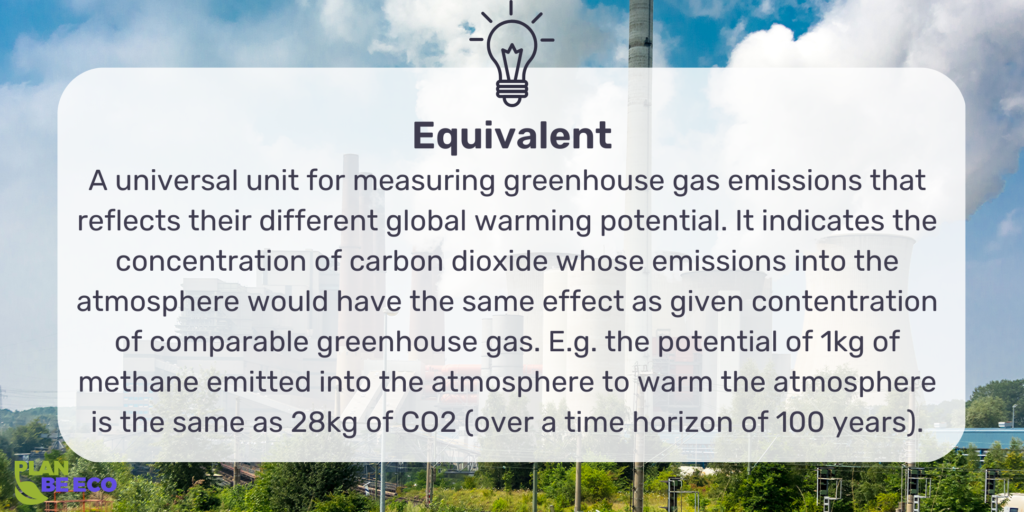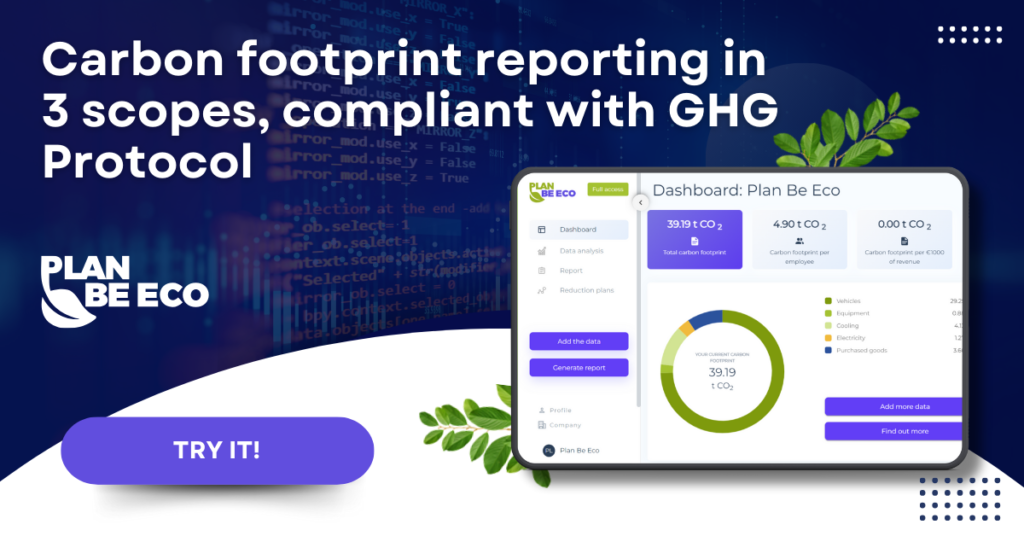Why reducing carbon footprint is essential for business

Let’s begin with the most expensive thing out there today, fuel.
❗️WARNING: This content is nerve-wracking. Keep reading only at your own risk.
Fuel companies knew about the negative impact of emissions as early as the 1970s. In 2005, BP partnered up with Ogilvy advertising agency to divert attention from the problem and created a campaign to promote a low-emission diet.
The effect of this campaign was the creation of a calculator which could calculate everyone’s carbon footprint. It naturally didn’t take into account the carbon footprint generated by the company itself. It transferred responsibility onto the people and away from the business. But it also marks the first attempt at quantifying carbon footprint.
One could say this is the good thing about this campaign. It was indicating that carbon footprint can be calculated as the preface for change.
This strategy, also employed by other major fossil fuel companies, borrowed heavily from previous campaigns by the tobacco industry and plastics industry to shift the blame for the negative consequences of those industries (underage smoking, cigarette butt pollution, and plastic pollution) onto individual choices. Here you can find long article commenting this topic widely.
Table of Contents
Which companies pollute the most?
Let’s begin with the most expensive thing out there today, fuel.
❗️WARNING: This content is nerve-wracking. Keep reading only at your own risk.
Fuel companies knew about the negative impact of emissions as early as the 1970s. In 2005, BP partnered up with Ogilvy advertising agency to divert attention from the problem and created a campaign to promote a low-emission diet.
The effect of this campaign was the creation of a calculator which could calculate everyone’s carbon footprint. It naturally didn’t take into account the carbon footprint generated by the company itself. It transferred responsibility onto the people and away from the business. But it also marks the first attempt at quantifying carbon footprint.
One could say this is the good thing about this campaign. It was indicating that carbon footprint can be calculated as the preface for change.
This strategy, also employed by other major fossil fuel companies, borrowed heavily from previous campaigns by the tobacco industry and plastics industry to shift the blame for the negative consequences of those industries (underage smoking, cigarette butt pollution, and plastic pollution) onto individual choices. Here you can find long article commenting this topic widely.
What is the carbon footprint?
A carbon footprint is the total emissions caused directly or indirectly by a person, organization, event, or product. The carbon footprint is expressed in Mg CO2e (Megagrams = tonnes of carbon dioxide equivalent). It is a measurement unit that measures a product’s or organization’s impact on our planet.
Product carbon footprint vs. corporate carbon footprint

What is the corporate carbon footprint (CCF)?
The corporate carbon footprint (CCF) or company carbon footprint is used for companies and organizations and includes all indirect and direct emissions of greenhouse gases (especially carbon dioxide) with a company’s operations, throughout the supply chain, over a specified reporting period (usually one year).
Knowing the value of the CCF makes it possible to take steps toward a company’s climate neutrality, and calculating it makes it possible to locate a company’s most carbon-intensive activities (energy costs, etc.). With this knowledge, companies can take appropriate reduction actions (for ex. carbon offsetting) and reduce their carbon footprint.
Top 7 Best B2B Carbon Footprint Softwares in 2023 for Sustainable Business Management
What are the top sources of carbon emissions?
The sources of carbon emissions can be divided into three groups:
People – where you can calculate the carbon footprint of the life of a single individual. What is included in the calculation? For example, the uses of energy and heat, transport (miles driven, train rides, flights, and the use of public transport), food – the kind of products consumed (e.g., meat has a much higher carbon footprint than vegetarian/vegan products) purchased goods: clothes, shoes, electronics, etc.
Products/services – we can discuss this based on a cup of coffee. To calculate the carbon footprint for the single cup, we include every step of the production process, from planting the coffee bean through the entire growing period, roasting, transportation, packaging, sales, brewing, and every single action that has to take place before it is poured into the cup, including the costs of the cafe where you order it.
Organizations/companies – here, the process starts with the fuel burned by the organization (vehicles driven by employees, etc.) and direct heat sources. The use of electric energy and heating and then the entire supply chain – all raw materials used, their transport, logistics, and service outsourcing (including legal and accounting services).

Why is it important to calculate carbon footprint?
Read what – according to Justyna Wysocka-Golec, Plan Be Eco, Co-Founder – is the most common motivation for companies to count their carbon footprint.
An increasing number of business clients in Western Europe require carbon footprint information for the products they purchase.
Those clients search for ways to reduce their carbon footprint by modifying their supply chains and how they package or transport their products.
Reporting GHG emissions is an element of environment-friendly public procurement procedures.
It is the result of a company’s strategy that wants to act responsibly and gain a competitive advantage. They know that it is an investment in the future expectations of their investors and financial institutions.
Clients require CDP reporting to continue cooperation, and they also look for high notes in those reports. [link]
An analysis of carbon footprint-lowering activity is conducted to pass an audit with a potential new client.
The valuation of companies includes their readiness for climate change.
Due diligence audit upon the sale of a company may require calculating carbon footprint.
Design a system to collect data to be presented to customers and create a zero net emission service (offsetting inevitable emissions).
Calculations are necessary to evaluate the amount of used or saved GHG emission – so it can be sold as a carbon offset.
What do we know about greenhouse gas emissions so far?
Okay, here we are going to park our bikes for now (because if we’re going to speed, it’s going to be in a zero-emission vehicle 😜) and conclude.
We already know what’s happening in nature and that we’re responsible for it.
We messed up the planet, but we will fix it by reducing greenhouse gas emissions.
Calculating our carbon footprint is the fundamental step we need to take towards net zero.
We have learned the genesis and definition of carbon footprint.
We understand that, at first, it may be black magic for you. But relax! We are in this together. We will help you put the knowledge together.
We want all entrepreneurs to be aware that reducing carbon emissions is the only way to maintain the planet’s balance as we know it.
Why reducing carbon footprint is important for business?
Reducing a business’s carbon footprint is essential for several reasons.
Firstly, it can help a business to reduce its operating costs by decreasing its energy consumption and reliance on fossil fuels. This can also make a company more resilient to fluctuations in energy prices.
Secondly, reducing a business’s carbon footprint can improve its reputation and brand image, as consumers and investors are increasingly concerned about the environmental impact of products and services. This can lead to increased customer loyalty and potentially even drive new business.
Finally, taking action to reduce carbon emissions is essential for addressing the global issue of climate change. Businesses have a significant impact on the environment. By reducing their carbon footprint, they can mitigate the adverse effects of climate change, such as rising sea levels and more frequent extreme weather events.
What are the best ways to reduce carbon emissions in your company?

There are several ways that companies can reduce their carbon emissions and minimize their impact on the environment. Some of the most effective strategies include green practices listed below.
By implementing energy-efficient practices and technologies, companies can reduce their energy consumption and lower their greenhouse gas emissions. This can include using energy-efficient lighting and appliances, optimizing building design and HVAC systems, and using renewable energy sources.
Replacing fossil fuels with renewable energy sources, such as solar or wind power, can significantly reduce a company’s carbon emissions. This can be done through on-site generation, such as installing solar panels or wind turbines, purchasing renewable energy credits, or participating in a green power program.
Reducing transportation emissions: Transportation is a significant source of greenhouse gas emissions for many organizations’ supply chain. Reducing these emissions can involve optimizing delivery routes, encouraging telecommuting and carpooling, and switching to electric or low-emission vehicles.
Adopting sustainable practices throughout the company, such as recycling and waste reduction, can help to reduce greenhouse gas emissions and minimize the company’s overall environmental impact.
Carbon offsetting: While reducing emissions is the most effective way to address climate change, eliminating them is not always possible. In these cases, organizations can offset their remaining emissions by investing in projects that reduce or remove greenhouse gases from the atmosphere, such as reforestation or carbon capture and storage. Carbon offsetting, however, should not replace activities aiming to reduce emissions.
What is Scope 3 in the organization’s carbon footprint calculation?
Summary
Overall, the best way to reduce carbon emissions will depend on the specific circumstances and needs of the company. It may involve a combination of these strategies and ongoing monitoring and continuous improvement efforts.
Looking for more articles on carbon offsetting, or business carbon footprint? Let’s check out our blog articles here!


